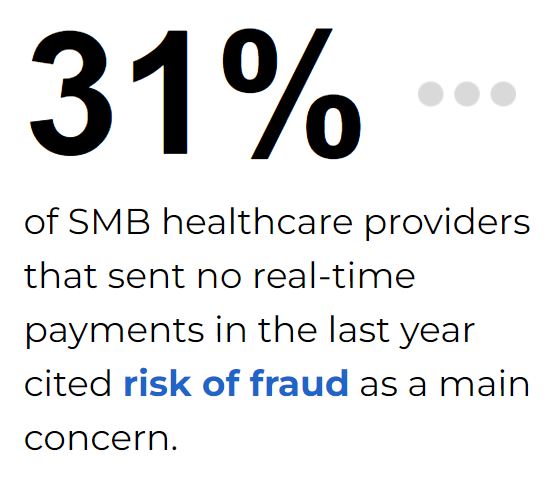
The healthcare sector, often burdened by slow and cumbersome payment processes, is undergoing a transformation aimed at alleviating financial strains. With a high volume of transactions and intricate billing systems, delays in payments have become a pressing issue, impacting cash flow and operational efficiency.
A PYMNTS Intelligence report, “Critical Care: Healing Healthcare With Real-Time Payments,” in collaboration with The Clearing House, examines the advent of real-time payments that offers a way to streamline financial transactions and enhance overall industry performance.

The ripple effects of late payments permeate the healthcare industry. Providers frequently grapple with delayed payments, which disrupt cash flow and create significant operational challenges.
According to the report, late payments are a considerable problem, with 25% of payments to small healthcare providers arriving past due. This delay jeopardizes their ability to meet payroll, pay vendors and maintain smooth operations. For many providers, the strain of managing late payments translates into increased pressure on accounts receivable teams and the need for meticulous cash flow management.
The problem is magnified by the recent spate of late payments faced by hospitals and health systems across the U.S. In the first quarter of 2024, a surge in late payments resulted in revenue shortfalls of up to 18%. This situation was worsened by a cyberattack on Change Healthcare, a major payment processor, which disrupted payment processing and exacerbated financial strains for healthcare providers. Such incidents underscore the critical need for more efficient payment solutions.
Real-time payments offer a potential remedy to the challenges posed by delayed payments. By facilitating instantaneous transactions, real-time payment systems can enhance cash flow and improve financial management for healthcare providers.
PYMNTS data reveals that 61% of small to mid-sized healthcare providers who use real-time payments cite speed as a primary benefit, with many also noting improvements in cash flow management and accuracy.
Eighty-three percent of small healthcare businesses used real-time payment options last year, and 81% of those reported high satisfaction with these systems. This positive feedback underscores the potential benefits of real-time payments in bolstering operational efficiency and financial stability.
As more healthcare providers adopt real-time payments, they are experiencing enhanced cash flow and reduced administrative burdens, allowing them to focus more on patient care rather than financial transactions.
Despite the evident advantages, the transition to real-time payments is not without challenges. Many healthcare providers continue to rely on legacy payment systems due to concerns about fraud and the slow adoption of new payment methods by customers. PYMNTS reports that 17% of small healthcare providers do not use real-time payment systems, primarily due to fears of increased fraud risks, with 31% of these providers citing fraud as a major concern.
Other barriers include limited consumer adoption, with 26% of providers who did not receive real-time payments citing this as a key issue. Additionally, some providers are deterred by perceived costs and the complexity of integrating new payment systems into existing infrastructures. Oracle Health’s challenges in modernizing its recently acquired Cerner payment systems illustrate the broader difficulties faced by the industry in updating financial technology.
The rising demand for faster payment options highlights a shift toward greater efficiency and convenience in healthcare. Patients now expect the same ease in financial transactions as they experience in other digital interactions.
To meet growing patient expectations, healthcare providers are adopting real-time payments, boosting cash flow and financial stability. This approach improves patient satisfaction, encourages repeat visits, and reduces administrative burdens and unpaid bills.
Challenges, however, such as system integration, data security and patient adoption persist. Digital payment platforms and automated systems can help overcome these obstacles, enhancing both financial management and patient care.